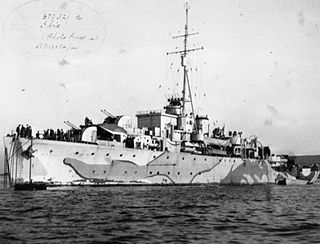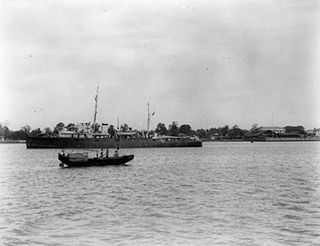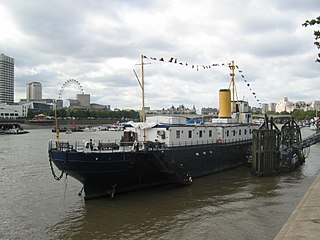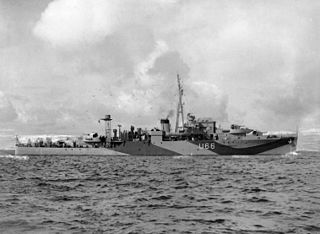 W
WHMS Actaeon was a modified Black Swan-class sloop of the Royal Navy. She was laid down by John I. Thornycroft & Company, Woolston, Southampton on 15 May 1944, and launched on 25 July 1945. The vessel was commissioned on 24 July 1946, with the pennant number U07.
 W
WHMS Amethyst was a modified Black Swan-class sloop of the Royal Navy. She was laid down by Alexander Stephen and Sons of Linthouse, Govan Scotland on 25 March 1942, launched on 7 May 1943 and commissioned on 2 November 1943, with the pennant number U16. After the Second World War she was modified and redesignated as a frigate, and renumbered F116.
 W
WHMS Black Swan, named after the black swan, was the name ship of the Black Swan-class sloops of the Royal Navy. This class was admired for its sea-going qualities.
 W
WHMS Chanticleer was a modified Black Swan-class sloop of the Royal Navy. She was laid down by William Denny and Brothers, Dumbarton on 6 June 1941, launched on 24 September 1942 and commissioned on 29 March 1943, with the pennant number U05.
 W
WHMS Coromandel was a wooden paddle dispatch vessel of the Royal Navy. She was built for the P&O company as the passenger and cargo steamer Tartar. The Navy purchased her in 1855 and she participated in several battles in Chinese waters, including having been sunk and recovered. The Navy sold her in 1866 and she went through several changes in ownership before she was broken up in 1876.
 W
WHMS Crane was a modified Black Swan-class sloop of the Royal Navy. She was laid down by William Denny and Brothers, Dumbarton on 13 June 1941, launched on 9 November 1942 and commissioned on 10 May 1943, with the pennant number U23.
 W
WHMS Cygnet was a modified Black Swan-class sloop of the Royal Navy. She was laid down by Cammell Laird, Birkenhead on 30 August 1941, launched on 28 July 1942 and commissioned on 1 December 1943, with the pennant number U38.
 W
WHMS Erne, pennant number U03, was a Black Swan-class sloop laid down by Furness Shipbuilding at Haverton Hill-on-Tees, Co. Durham on 21 September 1939, launched on 5 August 1940 and commissioned on 3 April 1941. She was adopted by the district of Bootle, then in Lancashire, as part of Warship Week in 1942.
 W
WThe Flower class comprised five sub-classes of sloops built under the Emergency War Programme for the Royal Navy during World War I, all of which were named after various flowers. They were popularly known as the "herbaceous borders", in humorous reference to a well-known adage about the Royal Navy, as well as to a type of garden border popular in the United Kingdom.
 W
WHMS Hind was a modified Black Swan-class sloop of the Royal Navy. She was laid down by William Denny and Brothers, Dumbarton on 31 August 1942, launched on 30 September 1943 and commissioned on 11 April 1944, with the pennant number U39.
 W
WHMS Ibis, pennant number U99, was a Black Swan-class sloop of the Royal Navy, named after the Ibis.
 W
WHMIS Indus was a Grimsby-class sloop of the Royal Indian Navy launched in 1934 and sunk during the Second World War in 1942. She was a slightly enlarged version of other vessels in the Grimsby class. She was named after the Indus River. Indus served mainly as an escort vessel, and she was therefore lightly armed. Her pennant number was changed to U67 in 1940.
 W
WThe Kil class was a class of sloops, also referred to as gunboats, built for the Royal Navy during the First World War. They were designed for anti-submarine warfare, but were completed too late in the war to be used extensively in that role. They were designed to be double-ended to confuse submarine observers, and were painted in dazzle camouflage. Following the war, the majority of the class were sold off and converted to coastal cargo vessels.
 W
WHMS Kite (U87) was a Modified Black Swan-class sloop of the Royal Navy, commanded by Lt Cdr Segram RN and once commanded by the famous U-boat hunter Captain Frederic John Walker. She was one of several ships of that class that took part in the famous "six in one trip" in 1944.
 W
WHMS Lapwing (U62) was a Modified Black Swan-class sloop of the Royal Navy.
 W
WHMS Lark was a modified Black Swan-class sloop of the Royal Navy. She was laid down by Scotts Shipbuilding and Engineering Company, Greenock on 5 May 1942, launched on 28 August 1943 and commissioned on 10 April 1944, with the pennant number U11.
 W
WHMS Magpie, pennant number U82, was a Royal Navy Modified Black Swan-class sloop launched in 1943 and broken up in 1959. She was the seventh Royal Navy ship to bear the name. The ship was the only vessel commanded by Prince Philip, Duke of Edinburgh, who took command on 2 September 1950, when he was 29.
 W
WHMS Martin was a 16-gun sloop of the Royal Navy. She served at the Battle of Camperdown in 1797 and captured two privateers before she disappeared in 1800.
 W
WHMS Modeste was a modified Black Swan-class sloop of the Royal Navy. She was laid down by Chatham Dockyard, Kent on 15 February 1943, launched on 29 January 1944 and commissioned on 3 September 1945, with the pennant number U42.
 W
WHMS Nereide was a modified Black Swan-class sloop of the Royal Navy. She was laid down by Chatham Dockyard, Kent on 15 February 1943, launched on 29 January 1944 and commissioned on 3 May 1946, with the pennant number U64.
 W
WThe P class, nominally described as "patrol boats", was in effect a class of coastal sloops. Twenty-four ships to this design were ordered in May 1915 and another thirty between February and June 1916 under the Emergency War Programme for the Royal Navy in the First World War, although ten of the latter group were in December 1916 altered on the stocks before launch for use as decoy Q-ships and were renumbered as PC-class sloops. None were named, although in 1925 P.38 was given the name Spey.
 W
WHMS Peterel was a 16-gun Pylades-class ship-sloop of the Royal Navy. She was launched in 1794 and was in active service until 1811. Her most famous action was the capture of the French brig Ligurienne when shortly after Peterel captured two merchant ships and sent them off with prize crews, three French ships attacked her. She drove two on shore and captured the largest, the 14-gun Ligurienne. The Navy converted Peterel to a receiving ship at Plymouth in 1811 and sold her in 1827.
 W
WHMS Pheasant was a Modified Black Swan-class sloop of the Royal Navy. She was laid down by Yarrow Shipbuilders, in Scotstoun, Glasgow on 13 July 1942, launched on 21 December 1942, and commissioned on 12 May 1943. She was adopted by the rural district of Runcorn, then in Cheshire, as part of Warship Week in 1942.
 W
WHMS President (1918) is a retired Flower-class Q-ship that was launched in 1918. She was renamed HMS President in 1922 and moored permanently on the Thames as a Royal Navy Reserve drill ship. In 1982 she was sold to private owners, and having changed hands twice, now serves as a venue for conferences and functions, and serves as the offices for a number of media companies. She had the suffix "(1918)" added to her name in order to distinguish her from HMS President, the Royal Naval Reserve base in St Katharine Docks. She is one of the last three surviving Royal Navy warships of the First World War. She is also the sole representative of the first type of purpose built anti-submarine vessels, and is the ancestor of World War II convoy escort sloops, which evolved into modern anti-submarine frigates.
 W
WHMS Redpole was a modified Black Swan-class sloop of the Royal Navy. She was laid down by Yarrow Shipbuilders Limited, Scotstoun on 18 May 1942, launched on 25 February 1943 and commissioned on 24 June 1943, with the pennant number U69.
 W
WHMS President (1918) is a retired Flower-class Q-ship that was launched in 1918. She was renamed HMS President in 1922 and moored permanently on the Thames as a Royal Navy Reserve drill ship. In 1982 she was sold to private owners, and having changed hands twice, now serves as a venue for conferences and functions, and serves as the offices for a number of media companies. She had the suffix "(1918)" added to her name in order to distinguish her from HMS President, the Royal Naval Reserve base in St Katharine Docks. She is one of the last three surviving Royal Navy warships of the First World War. She is also the sole representative of the first type of purpose built anti-submarine vessels, and is the ancestor of World War II convoy escort sloops, which evolved into modern anti-submarine frigates.
 W
WHMS Starling, pennant number U66, was a Modified Black Swan-class sloop of the Royal Navy. She was active in the Battle of the Atlantic during the Second World War and was the most successful anti-submarine warfare vessel of the Royal Navy, being credited with the destruction of fourteen U-boats.
 W
WHMS Wellington is a Grimsby-class sloop, formerly of the Royal Navy. During the Second World War, she served as a convoy escort ship in the North Atlantic. She is now moored alongside the Victoria Embankment, at Temple Pier, on the River Thames in London, England, as the headquarters ship of the Honourable Company of Master Mariners, where she is known as HQS Wellington. It was always the ambition of the founding members of the company to have a livery hall. Up to the outbreak of war in 1939, various proposals were examined, including the purchase of a sailing ship, Archibald Russell.
 W
WHMS Wild Goose, pennant number U45, was a Black Swan-class sloop of the Royal Navy. She was one of several ships of that class that took part in the famous "six in one trip" in 1943.
 W
WHMS Woodpecker, pennant number U08, was a Black Swan-class sloop of the Royal Navy. She was active during the Second World War and was a successful anti-submarine warfare vessel, being credited with the destruction of six U-boats.